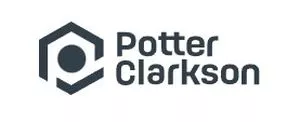- within Privacy topic(s)
In a landmark ruling (and the first substantive judgment of the Court of Appeal (CoA) of the Unified Patent Court), the CoA has overturned a widely reported decision of the Munich Local Division1 in which a preliminary injunction was ordered against NanoString.
BACKGROUND
The patent in question, EP 4 108 782, claims a method for detecting a plurality of analytes in a cell or tissue sample. Claim 1 of the patent specifies a series of method steps which include (c) incubating detection reagents with the analytes to be detected, to allow the detection reagents to bind the analytes; and (d) detecting detection reagents bound to the analytes.
10x Genomics, the patentee, sought a preliminary injunction against NanoString in June 2023. At first instance, the Munich Local Division was satisfied that, on a preliminary basis, the patent was valid and had been infringed by NanoString. The Court determined that the interests of 10x Genomics in preventing infringement of its rights outweighed NanoString's interests in maintaining market share. A preliminary injunction was ordered against NanoString.
NanoString subsequently appealed the decision, on the grounds that (amongst others) the first instance court had erred in its narrow interpretation of Claim 1 of the patent, and in its preliminary finding that the patent was inventive.
Of significance was a prior art document ("D6") filed by NanoString, which describes a multiplexed method for detecting DNA sequences. Whilst NanoString failed in its novelty attack based on D6 at first instance, on appeal, NanoString additionally alleged that combining the teachings of D6 with another paper (which discloses a multiplexed method to detect RNA molecules in situ using similar technology ("B30")) rendered the patent obvious.
CoA DECISION
NanoString succeeded in overturning the Munich Local Division's decision. The CoA agreed that the patent is novel, but that the first instance court erred in its construction of Claim 1 and, as a result, was wrong to determine that the invention claimed involves an inventive step.
Applying Article 69 of the European Patent Convention, the CoA made clear that whilst the claim language is the "decisive basis" for determining the scope of a European patent, the description and the drawings must always be used as "explanatory aids" for the purposes of interpreting the patent claims (and not solely to resolve ambiguities in the claim wording).
In respect of its interpretation of Claim 1, the CoA determined that the language of the claim does not require that (1) the detection reagents must remain bound to the analytes throughout the entire detection process; and (2) the incubating and detecting steps cannot be repeated. In reaching this conclusion, the CoA referred to paragraphs in the description of the patent which state that incubation times range from 30 seconds to 48 hours. In the CoA's view, it was therefore "not impossible" for the detection reagents to be removed in between detection events.
In respect of D6, the CoA determined that this paper would have been of interest to a person skilled in the art at the priority date of the patent when faced with the problem underlying the invention: "developing high-throughput optical multiplexing methods for detecting target molecules in a sample".
The Court also noted that D6 makes reference (in a footnote) to detection methods being carried out directly on tissues and cells. This is in addition to the teaching in B30.
The CoA ultimately concluded that:
- The cycling incubation and detection steps in D6 fell within the scope of Claim 1 (based on the above claim construction), although did not apply "in a cell or tissue sample" as Claim 1 requires; and
- However, starting with D6, it would have been obvious for a skilled person to modify the method described therein to one using tissue or cell samples.
This led the CoA to call into question the validity of the patent and to conclude that since "it is more likely than not" that the patent at issue will be found to be obvious and, therefore, invalid at trial, there is "no sufficient basis" for granting a preliminary injunction.
10x Genomics was ordered to pay the costs of the proceedings.
COMMENTARY
This is a noteworthy decision, with the CoA taking a bold step in diverging from the more patentee-friendly approach taken by the lower instance court. The UPC continues to showcase its willingness and ability to scrutinise the validity of patents, here for the purposes of a preliminary injunction application.
The CoA did not, however, take issue with the approach taken by the court in assessing whether such relief should be ordered; the appeal succeeded purely on the basis of a difference in claim construction. In doing so, the CoA gave some useful pointers as to how to approach this and how prior art should be addressed (albeit not in the context of a full trial on validity). However, there appears to be a lack of clarity as to whether the EPO's "problem-and-solution" approach is to be adopted by the UPC when assessing inventive step, which is not expressly (or at least not fully) used by the CoA.
This case is only one aspect of a global infringement dispute between the parties. There are parallel opposition proceedings afoot in the EPO in respect of the patent, and the equivalent US patent is also subject to infringement proceedings, to be heard later this year. Interestingly, the UPC also refused, by way of separate order in March 2024, to stay the present proceedings due to NanoString's Chapter 11 insolvency filing in the US2. Provided NanoString survives insolvency, we expect there to be lots more to report in relation to this dispute.
Footnotes
1. UPC delivers a landmark preliminary injunction in the life sciences sector
2. UPC_CoA_335/2023 APL_576355/2023 App_6601/2024
The content of this article is intended to provide a general guide to the subject matter. Specialist advice should be sought about your specific circumstances.



